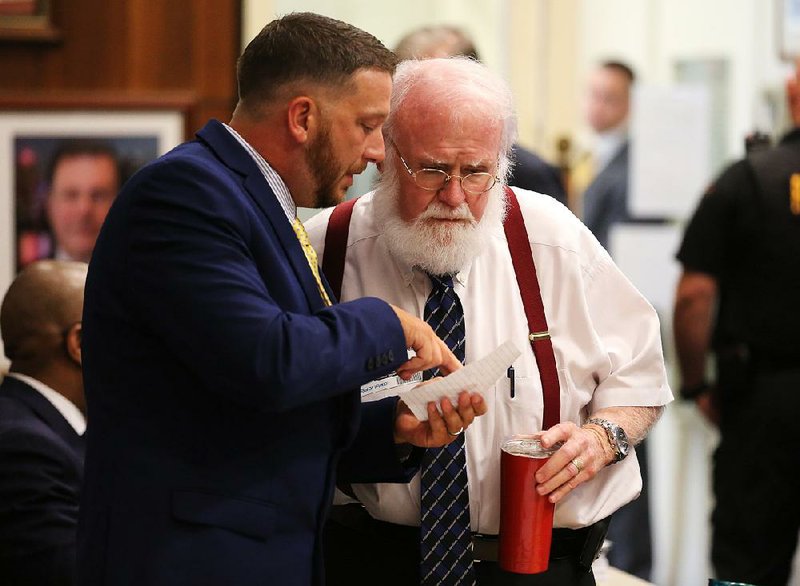A Pulaski County circuit court judge ruled Thursday that Little Rock police officer Charles Starks should not have been fired after a traffic stop in which Starks fatally shot a city resident.
Judge Timothy Fox ruled that a 30-day suspension and a reduction in Starks’ pay to that of an entry-level officer are sufficient discipline.
On Feb. 22, Bradley Blackshire, 30, drove a black Nissan Altima into a parking lot at 7305 Kanis Road near South Rodney Parham Road. A license plate reader had flagged the car as stolen, and Starks was the first officer to respond to the report. After a few seconds of heated conversation, Blackshire rolled the vehicle forward, striking Starks' leg.
[DOCUMENT: Read judge's complete order » arkansasonline.com/12starks]
Starks fired his weapon several times and walked in front of the vehicle in what he later said was an attempt to get to his patrol car. The car Blackshire was driving rolled forward and struck Starks, who fired several more times. Eight of the 15 bullets Starks fired struck Blackshire, and he died.
Starks was immediately placed on administrative leave and was fired on May 6. Two weeks before he was fired, the Pulaski County prosecuting attorney's office ruled that the shooting was justified.
The Civil Service Commission upheld Starks' termination in a 5-1 vote. Starks' attorney, Robert Newcomb, appealed the decision to the circuit court.
Because Starks was not charged by the prosecuting attorney, the judge’s decision was limited to whether Starks violated a department rule, and if he did, what discipline is appropriate.
The rule at issue, General Order 303 Section II E 2, states, "Officers will not voluntarily place themselves in a position in front of an oncoming vehicle where deadly force is the probable outcome. When confronted by an oncoming vehicle, officers will move out of its path, if possible, rather than fire at the vehicle."
The judge ruled Starks did violate the policy but that termination of employment, the most severe discipline, was not necessary.

